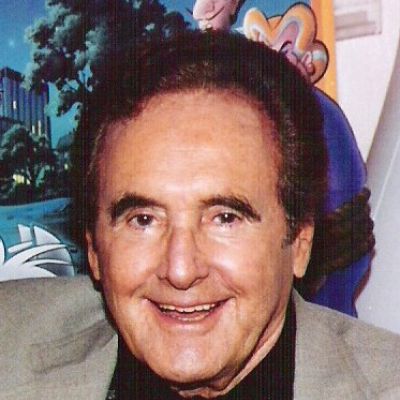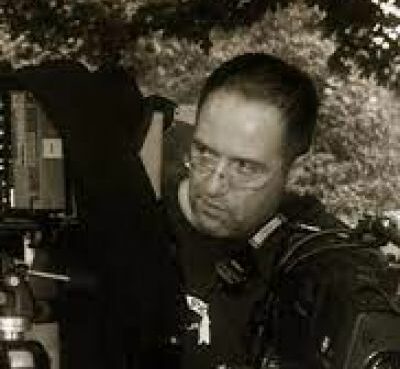Joseph Joe Barbera- Biography
Page Contents
Joseph “Joe” Barbera was an American motion-picture animator, director, producer, storyboard, and cartoon artist best known for co-creating the “Tom and Jerry” cartoon series. Barbera, a banker-turned-animator, reached a watershed moment in his career when he met William Hanna. They ended up being a part of cooperation that lasted half a century.
They both worked for ‘MGM’ before launching their own firm, ‘Hanna-Barbera Productions,’ which went on to become the world’s most successful TV cartoon studio. ‘Huckleberry Hound,’ ‘Yogi Bear,’ ‘The Flintstones,’ and ‘The Jetsons’ were all created by the animation duo. Several comic book spin-offs have been inspired by many of their shows. Despite its success, ‘Hanna-Barbera’ shows have been chastised for their poor animation techniques.
Joseph Joe Barbera- Birth, Age, Ethnicity, Siblings, Education
Joseph Roland Barbera was born in Manhattan, New York, on March 24, 1911. Vincent Barbera (1889–1965) and Francesca Calvacca Barbera (1875–1969), both Italian immigrants, had him as their first child. Larry (1912–1999) and Ted (1914–2000), his younger brothers, having also served in World War II.
Barbera’s father, who formerly ran a thriving business through his barbershops, abandoned the family when he was 15 years old after losing everything to gambling. Barbera’s maternal uncle, Jim, then took care of the family.
Barbera attended ‘Erasmus Hall High School’ in Brooklyn as a gifted artist, where he won numerous boxing titles. However, he quickly became disinterested in the sport. He also worked as a tailor’s delivery guy.
Joseph Joe Barbera- Professional Career
Barbera wanted to become an animator after seeing ‘The Skeleton Dance’ in 1929. He tried his hand as a cartoonist for ‘The NY Hits Magazine.’ Barbera’s expenditures were covered by a position at the ‘Irving Trust Bank’ on Wall Street at the time, while he published cartoons for ‘Redbook’ and ‘The Saturday Evening Post.’ He was also a successful employee of ‘Collier’s.’
Barbera also sought Walt Disney’s counsel on how to create a successful career in the animation industry. While attending the ‘Art Students League of New York and the ‘Pratt Institute,’ Barbera found a position at ‘Fleischer Studios.’ In 1932, he was engaged as an animator and storyboard artist by the ‘Van Beuren Studios.’
‘Cubby Bear’ and ‘Rainbow Parades’ were two of Barbera’s early ventures. In addition, he devised an earlier version of ‘Tom and Jerry.’
Paul Terry of the ‘Terrytoons’ studio refused to produce Barbera’s first solo storyboards for ‘Kiko the Kangaroo’ and ‘Dirty Dog’ in 1935. Barbera, on the other hand, joined the studio after ‘Van Beuren’ closed down in 1936. In November 2013, the original storyboard was auctioned off.
Barbera joined the ‘Metro-Goldwyn-Mayer’ (MGM) cartoon unit in California in 1937, hoping to earn greater pay. To his dismay, Los Angeles, like Brooklyn, was in the grip of the Great Depression. Barbera soon met William Hanna, and by 1939, they had formed a strong professional partnership that would last for the next six decades. They worked along with animator Tex Avery.
Barbera and Hanna co-directed the ‘Academy’-nominated cartoon ‘Puss Gets the Boot’ in 1940. Despite their popularity, their studio’s head, Fred Quimby, did not want any more cat-and-mouse cartoons. Barbera and Hanna dismissed Quimby’s suggestion and started working on their next cat-and-mouse-themed animation, ‘Tom and Jerry,’ which became their most famous masterpiece. Quimby eventually agreed to let Hanna and Barbera work on the ‘Tom and Jerry’ project.
In ‘The Midnight Snack,’ Barbera and Hanna presented a new version of the ‘Tom and Jerry’ characters (1941). They directed over 114 classic animation shorts for ‘Tom and Jerry over the next 17 years. Continuing the practice, Barbera and Hanna produced animated instruction films during WWII. Initially, there were no dialogues in ‘Tom and Jerry,’ and the story was delivered solely through motions. The series’ first ‘Academy Award’ was given to the 11th short, ‘The Yankee Doodle Mouse,’ in 1943.
‘Tom and Jerry’ won seven ‘Academy Awards’ out of the 14 nominations it received, the most in the category. Hanna and Barbera have an additional eight ‘Emmy Awards’ to their credit. From 1946 through 1951, Barbera and ‘Tom and Jerry’ designer Harvey Eisenberg managed a comic-book company called ‘Dearfield Publishing.’ Quimby was replaced by Hanna and Barbera after he resigned in late 1955. ‘MGM’ closed its animation studio and fired everyone in 1957. Barbera and Hanna then established ‘Hanna-Barbera Productions.’
The company initially struggled to generate income. Following in the footsteps of ‘Walt Disney,’ ‘Hanna-Barbera’ began to re-air vintage ‘Tom and Jerry’ cartoons. The attempt was successful, and they were able to raise the funds needed to fund exclusive animated programs for color television. Hanna worked on the pacing, story construction, and artist recruiting while Barbera penned the gags and sketched the characters. They would make key corporate choices together, and the presidency would be rotated between them each year.
‘The Huckleberry Hound Show’ (1958–1961), ‘The Flintstones’ (1960–1966), ‘Yogi Bear’ (1961–1962), ‘Quick Draw McGraw’ (1959–1961), ‘Top Cat’ (1961–1962), ‘The Jetsons’ (1962–1963), ‘Magilla Gorilla’ (1963–1967), ‘Jonny Quest’ (1964–1965), ‘Wacky
Animated specials based on ‘Alice in Wonderland,’ ‘Jack and the Beanstalk,’ and ‘Cyrano’ were also produced by ‘Hanna-Barbera.’ They also made feature films including ‘Charlotte’s Web’ and ‘Heidi’s Song.’
‘Hanna-Barbera’ used cost-cutting strategies to produce more animated programs, and by the late 1960s, the business had become the world’s most prosperous TV cartoon studio, generating over 3,000 animated half-hour shows. ‘Taft Broadcasting’ (‘Great American Communications’) purchased ‘Hanna-Barbera Productions’ in December 1966, but the two remained as business heads until 1991. The corporation was afterward sold to the ‘Turner Broadcasting System.’
‘Hanna-Barbera’ then began creating original ‘Cartoon Network’ series such as ‘Dexter’s Laboratory’ and ‘The Powerpuff Girls.’ In 1996, ‘Turner’ amalgamated with ‘Time Warner.’ Barbera and Hanna, on the other hand, continued to help ‘Turner.’ They also worked on new projects, such as cartoons for ‘The Cartoon Cartoon Show,’ as well as feature versions of ‘The Flintstones’ (1994) and ‘Scooby-Doo’ (2002).
Barbera provided the voice for ‘The Mansion Cat,’ a ‘Tom and Jerry’ animation from 2000. After Hanna died in March 2001, ‘Hanna-Barbera’ was acquired by ‘Warner Bros. Animation.’
Barbera became the executive producer for ‘Warner Bros.’ direct-to-video subsidiary, creating TV shows such as ‘What’s New, Scooby-Doo?’ and ‘Tom and Jerry Tales.’ He also wrote and co-created ‘The Karate Guard,’ a film adaptation of ‘Tom and Jerry’ (2005).
Barbera’s final production was the direct-to-video film ‘Tom and Jerry: A Nutcracker Tale,’ which was released posthumously in 2007.
Criticism
Despite its popularity, the ‘Tom and Jerry’ series has been criticized for being overly violent. Furthermore, Hanna and Barbera’s cost-cutting methods had a significant impact not just on animation quality but also on job chances in the business.
Their very simple designs and repetitious animations were dismissed by viewers. Similarly, many of their shows shared elements with well-known properties.
Joseph Joe Barbera- Relationship, Married Life
Barbera was married to Dorothy Earl from 1935 until 1963 when they divorced. They were high school sweethearts known as “Romeo and Juliet.” They had two sons, one of whom died while he was a child, and two daughters, Lynn and Jayne, who are now producers.
Barbera reportedly dated Sheila Holden, the sister of British rocker Vince Taylor.
Barbera died on December 18, 2006, in Los Angeles, California, of natural causes. At the time of his death, he was 95 years old. He was laid to rest in Glendale’s ‘Forest Lawn Memorial Park.’
Over 20 languages have been translated into legacy ‘Hanna-Barbera’ shows. Aside from their exceptional animation, shows such as ‘The Cat Concerto’ (1946) and ‘Johann Mouse’ (1952) have received praise for their outstanding music.
Also Read, Cecilia Allman, Marian Krawstor, and Bronlie Jacobs.




